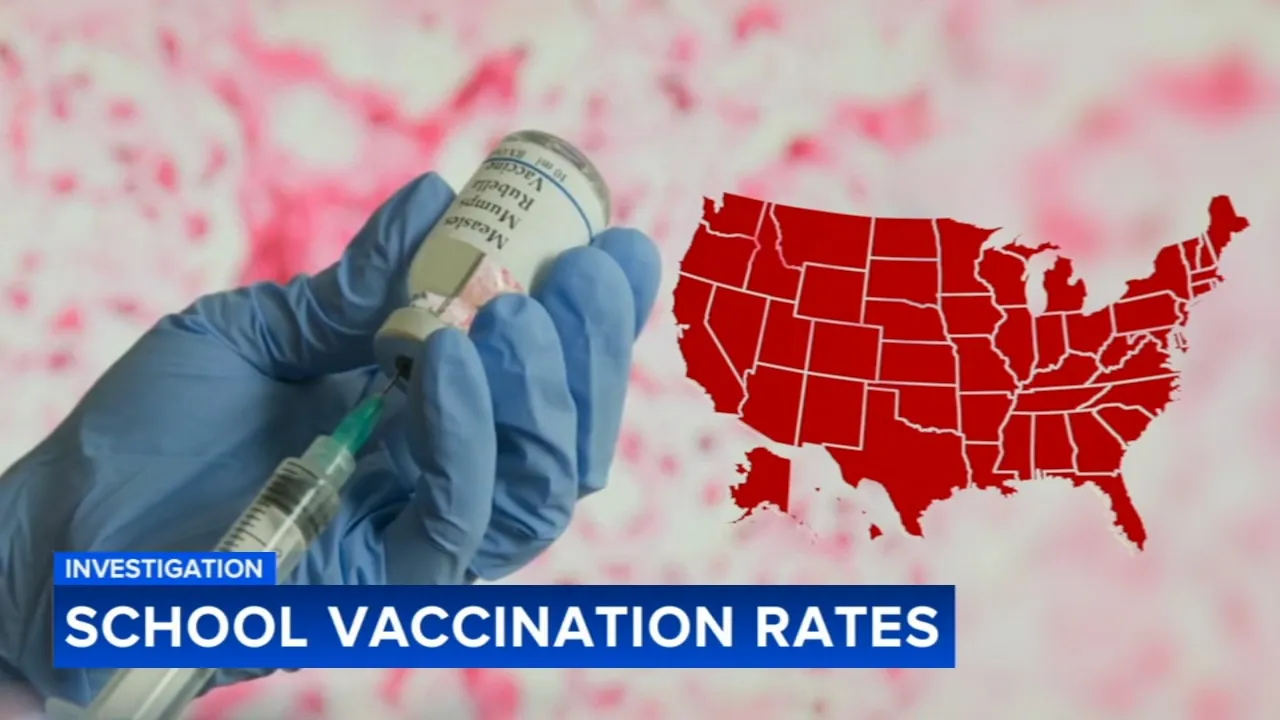Investigation: Big Drop in MMR Vaccinations at Area Schools
In the wake of the COVID-19 pandemic, a troubling trend has emerged concerning the measles, mumps, and rubella (MMR) vaccinations in schools across the United States. Research released earlier this year indicated that the vaccination rates for MMR have dropped significantly, with almost 80 percent of counties experiencing a decline in coverage. This article seeks to delve into the implications of these findings, the contributing factors behind this drop, and the potential risks facing public health.
The Current Landscape of Vaccinations
The Centers for Disease Control and Prevention (CDC) has been tracking vaccination rates over the years, but the data from 2020-2023 reveal a concerning decline, particularly in measles vaccinations. According to the CDC, achieving a vaccination coverage of at least 95% is vital to establishing herd immunity—the threshold needed to protect those who cannot be vaccinated due to medical reasons.
Impacts of COVID-19 on Healthcare Services
The disruptions caused by the COVID-19 pandemic led to reduced access to healthcare services for many families. Vaccination appointments were canceled, health clinics were repurposed, and parents were understandably preoccupied with the immediate threat of the virus. The National Network for Immunization Information reported that routine immunizations saw a significant drop during the height of the pandemic, with the MMR vaccine witnessing one of the most substantial declines.
The Data Revealed
A comprehensive study conducted by researchers at the Journal of the American Medical Association indicated that in nearly 80% of U.S. counties, the rates of MMR vaccinations fell below the optimal level needed to prevent outbreaks. This phenomenon did not discriminate; urban, suburban, and rural areas all reported declines.
Reasons Behind the Decline
Several factors have contributed to the decline in MMR vaccinations:
- Misinformation and Vaccine Hesitancy: The proliferation of misinformation regarding vaccine safety has fueled hesitancy among some parents. High-profile studies that have since been discredited continue to circulate, leading some to question the necessity and safety of vaccines.
- Healthcare Access and Availability: Families faced challenges accessing healthcare during the pandemic. Many vaccination clinics were closed or did not offer routine immunizations, resulting in postponed vaccinations.
- Economic Strain: Economic hardships faced by many families during the pandemic made it difficult to prioritize preventive healthcare, including vaccinations.
- Cultural and Social Influences: Communities with strong anti-vaccine sentiments already had low vaccination rates prior to the pandemic. The COVID-19 situation exacerbated these existing divides.
Consequences of Reduced Vaccination Rates
The decline in MMR vaccinations raises significant public health concerns. A decrease in vaccination coverage increases the likelihood of outbreaks. Measles is highly contagious, and even small pockets of unvaccinated individuals can lead to outbreaks. In 2019, the U.S. faced its largest measles outbreak in decades, which many health officials fear may become a regular occurrence if vaccination rates do not improve.
Measles: A Global Perspective
Globally, measles is a major cause of child mortality. According to the World Health Organization (WHO), there was a 50% increase in global measles cases from 2019 to 2020 due to reduced vaccination coverage. Countries that present low vaccination rates are particularly vulnerable to measles outbreaks, which can lead to serious health complications.
Addressing the Situation
Health officials, educators, and policymakers are working together to address the troubling decline in vaccinations. Here are some proactive measures being implemented or suggested:
- Awareness Campaigns: Many health departments are launching campaigns to address vaccine hesitancy and educate parents about the importance of vaccines.
- Mobile Vaccination Clinics: Offering vaccinations in community settings can help families access vaccines more easily, bridging the gap created by healthcare access issues.
- Partnerships with Schools: Schools are now becoming critical partners in vaccination efforts, as they can serve as trusted sources of health information and facilitate in-school vaccination programs.
- Monitoring and Analysis: Continued monitoring of vaccination rates at the local and national levels will be essential for understanding coverage trends and addressing gaps.
The Role of Parents
Parents play a pivotal role in the future of vaccination rates. By staying informed and actively engaging with healthcare providers, parents can make educated choices regarding their children’s health. Open dialogue with pediatricians and constructive conversations about vaccine-related concerns can pave the way for better understanding and adherence to vaccination schedules.
Resources for Parents
Parents looking for reliable information can turn to several reputable sources:
- The CDC’s Vaccines for Your Children
- The American Academy of Pediatrics (AAP)
- The World Health Organization
Conclusion
The decrease in MMR vaccinations is a significant public health concern that calls for immediate action from community leaders, health officials, and families. While the pandemic has disrupted regular healthcare practices, it is crucial that we focus on regaining the trust of parents and rebuilding vaccination rates. Protecting our children and our communities from preventable diseases like measles requires collective efforts, continued education, and unwavering commitment to vaccination. While the roadmap ahead is challenging, prioritizing public health will ensure brighter and healthier futures for generations to come.







